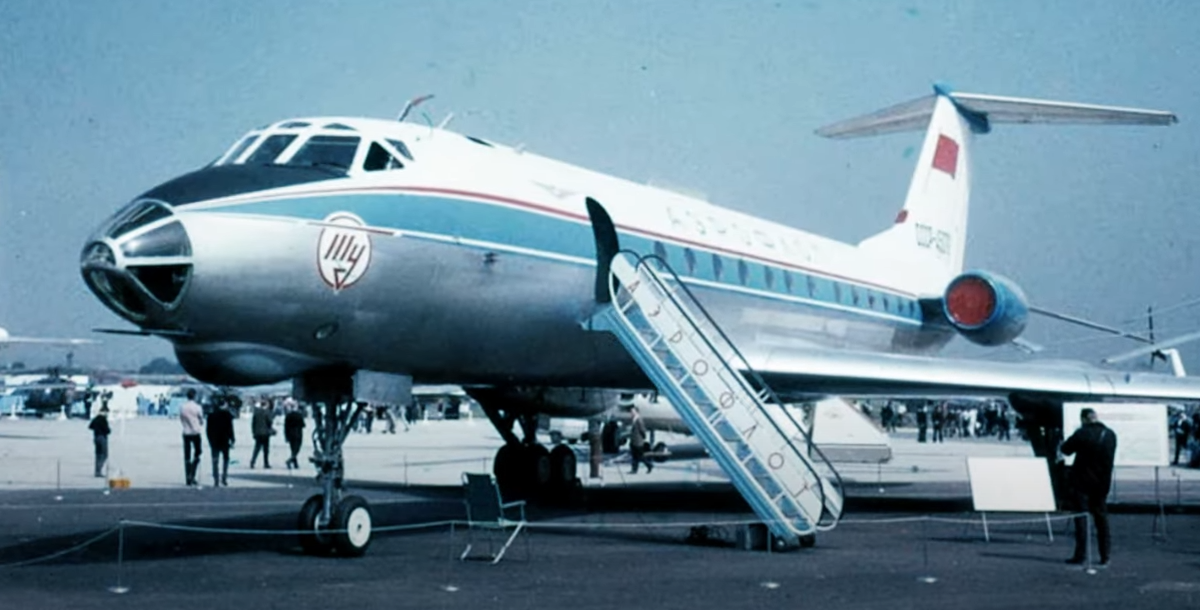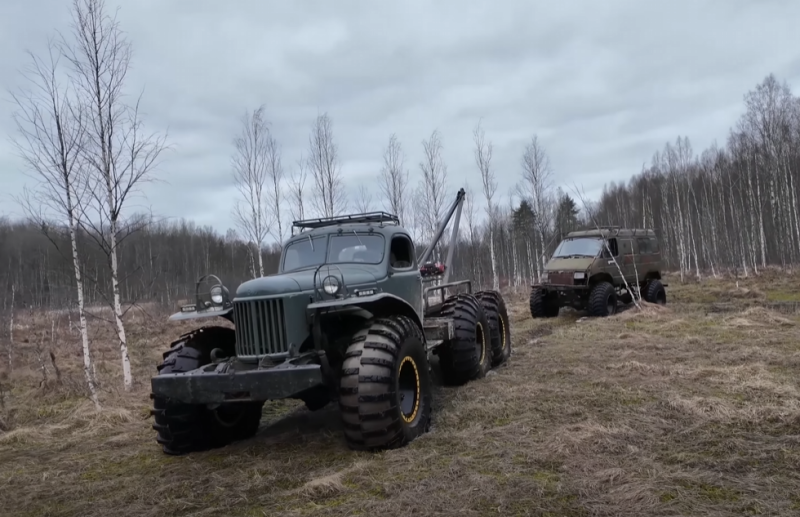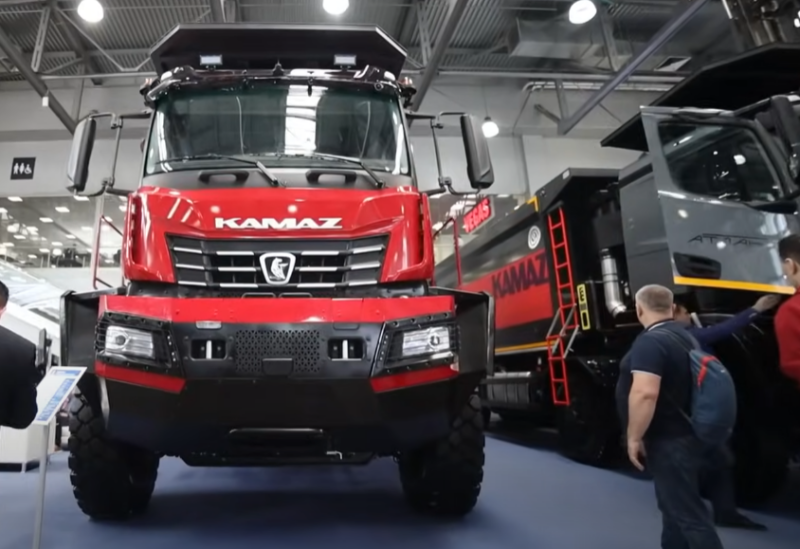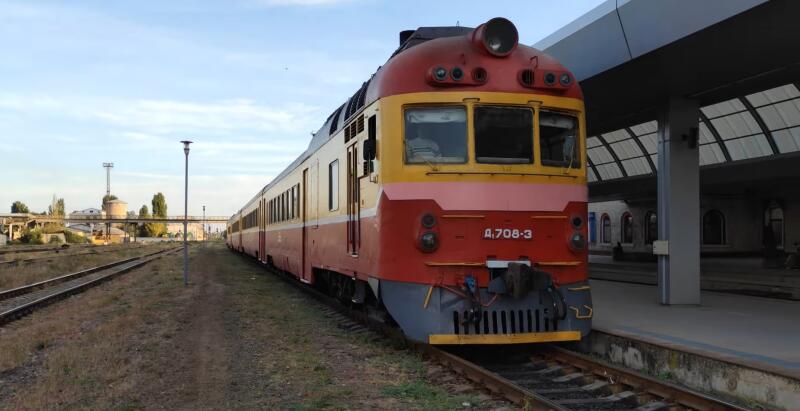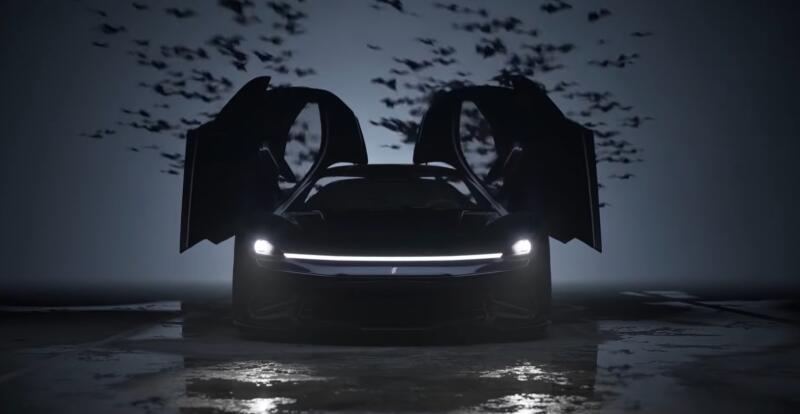The story of
In the early 1960s, the main passenger aircraft in the Soviet Union used on domestic routes was the Il-14. This aircraft with piston engines is an excellent example of this type of technology, but it also became the last propeller liner.
 Glass nose, where the navigator was located. Photo: Youtube.com
Glass nose, where the navigator was located. Photo: Youtube.comThe era of jet engines has long come, especially since the IL-14 had only 36 passenger seats - this was not enough. The situation could be corrected by TU-104 and 124, but the first was practically not used for domestic flights, and the second in terms of passenger capacity was only 20 people superior to the IL-14. However, the forces of internal aviation successfully coped with the problem, moreover, many flew to the USSR, and even on quite everyday matters.
It is believed that Khrushchev gave impetus to the development of the TU-134. There is no documentary confirmation of this, but they say that Nikita Sergeevich, having been in France, was hit by a Sud Aviation Caravella aircraft. Returning to his homeland, the Secretary General instructed the Tupolev Design Bureau to urgently develop his own liner, which would be superior to the foreign model.
So it was, or not, is not so important for history, but the fact that the location of the engines in the tail was copied is a fact. This design made the aircraft more comfortable for passengers.
In order not to develop the model from scratch, it was decided to take the base TU-124 and refine it.
The main changes that were supposed to be made:
- The increase in the length of the fuselage, respectively, and the number of passenger seats
- Moving engines to the tail section
- Replacing the plumage with a T-shaped
The first two prototypes with the TU-124A index were assembled in 1963, at the same time they began to be tested. The liner turned out to be successful and after a couple of years it was assigned the TU-134 index. Serial production of the model started in 1966.
 Flight TU-134. Photo: Youtube.com
Flight TU-134. Photo: Youtube.comAn interesting fact is that a similar passenger aircraft was being developed at that time in the UK and the USA. The British screwed up great - testing their prototype ended in disaster.
Initially, they were going to produce the liner in two versions - for 56 and 50 seats. In the latest version, two classes were supposed - one for high-ranking passengers.
But planes with 72 seats went into the series - Soviet citizens could not be divided into categories. Later, when the TU-134 began to be used on international flights, such liners nevertheless appeared.
The first years of operation and modernization
Aeroflot received the TU-134 in 1966. The liner made its first flight on the Moscow-Adler route, but after that it was used mainly on international lines. Although the model was developed for domestic use, it turned out to be better than the TU-104.
The use of the new airliner for local flights began only in 1969 - when Aeroflot received a sufficient number of aircraft. But the elitism of the model has not gone away - it was operated only for flights between the capitals of the Soviet republics.
 View from the navigator's cockpit. Photo: Youtube.com
View from the navigator's cockpit. Photo: Youtube.comA little earlier, in 1968, the TU-134 began to be sold to the countries of the socialist camp. The first batch was exported to the German Democratic Republic. There, the plane fell in love with the local population and received the nickname "Heavenly Devil" for its outstanding technical characteristics.
In 1970, the first major modernization of the model took place - it changed the index to TU-134A.
Changes:
- The fuselage has become longer by 2 mm
- The number of passenger seats increased from 72 to 76
- Decreased fuel consumption
- There was a reverse on the engines
This modification was produced in several versions, they differed from each other in engines, different salons. Separately, it is worth mentioning about the TU-134A-2 - it had a glazing of the bow.
In 1980, the next major modernization of the liner took place. He received the index TU-134B. The new aircraft already had 80 passenger seats, the crew was reduced from four to three people, the engineers upgraded the controls.
On the basis of this model, not only modified TU-134s were produced, but also versions designed to deliver space shuttles to low orbit. There were also special training aircraft on which military pilots were trained. This is TU-134UBL/Sh/UBL-Sh.
 For the Soviet Union, this was a common picture. Photo: Youtube.com
For the Soviet Union, this was a common picture. Photo: Youtube.comIt was supposed to make another upgrade in the late 1980s, but this did not happen - the TU-134 was removed from production in 1989. So the plane remained Soviet, for several years it did not "live" before the collapse of the USSR.
How an international liner became an all-Union one
Until 1972, the new Soviet liner was used mainly for flights abroad. In the USSR, he flew only to 12 major cities. But after the An-1972 medium-haul passenger aircraft crashed in May 10, it was decided to abandon the model. Only TU-134 could take this place, which he did.
I had to urgently redo some of the Soviet airports - they were not designed for such large jet aircraft.
So the TU-134 became the most popular Soviet passenger aircraft - a real station wagon, which worked in the USSR, and could go “on a visit” abroad and not be disgraced. But the years went by - the once popular model became obsolete. Gradually, the liner stopped flying abroad - it was replaced in this field by the TU-154 and Il-62.
Design features of the model
The Soviet passenger aircraft TU-134 is a typical all-metal low-wing aircraft with turbojet engines of the D-30 series located in the tail section. The fuselage is structurally similar to the TU-124, but lengthened.
 View of the engine from the aircraft cabin. Photo: Youtube.com
View of the engine from the aircraft cabin. Photo: Youtube.comThe first modifications of the liner took place in the cockpit for the navigator, then it was decided to abandon it. This is due not to the increased professionalism of the crew, but to the development of new navigation technologies.
TU-134 is one of the most reliable passenger liners in the world. The service life eloquently hints at this - it was originally set at the level of 8 flying hours. Then it was increased to 000 fantastic and unattainable for foreign models. The service life of the liner was 40 years.
Interesting facts about TU-134
The Soviet aircraft, even at the start of its career, that is, before launching into mass production, got into a force majeure situation. During the next test flight, ball lightning hit the cockpit. How exactly this happened is not specified, but it flew into the passenger compartment. Then the crew managed to land the liner, despite the fact that ball lightning melted the skin in several places.
 Takeoff of TU-134. Photo: Youtube.com
Takeoff of TU-134. Photo: Youtube.comDo not believe critics who claim that the TU-134 is not a match for foreign aircraft of the same production years. The Soviet liner was the first to receive an international certificate of conformity. Yes, and sales to different countries eloquently hint at the popularity of the model.
In Soviet times, decommissioned aircraft were often installed as monuments in parks or original toys on playgrounds, most often in pioneer camps. Did not escape this fate and TU-134.
Now the once popular Soviet airliner is hopelessly outdated and is not used in civil aviation, at least in Russia. But it will forever remain in the memory of many pilots and passengers as a reliable and stylish aircraft that introduced them to the sky.
